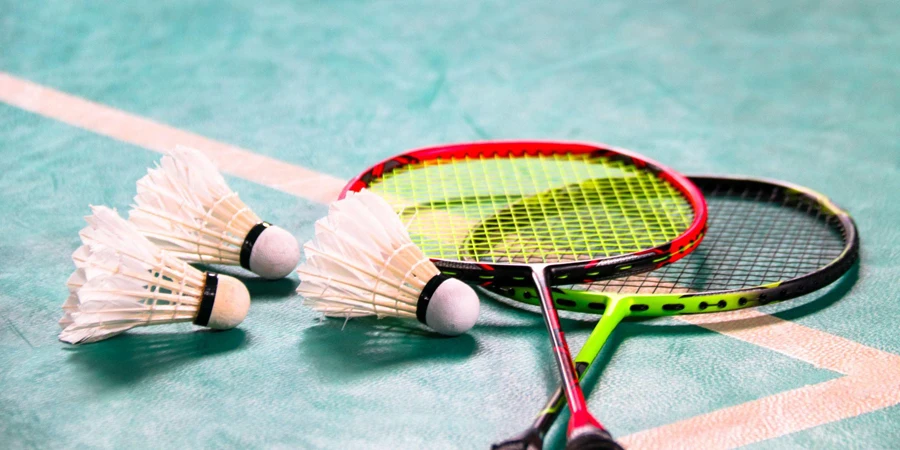Shop At Haya: Your Ultimate Shopping Guide
Discover the best shopping tips, trends, and deals for a smarter buying experience.
Badminton: The Shuttlecock's Secret Life
Discover the hidden journey of the shuttlecock! Unveil secrets, fun facts, and the surprising world of badminton in this must-read blog.
Exploring the Evolution of the Shuttlecock: Materials and Design
The shuttlecock, an essential item in the sport of badminton, has undergone significant changes in both materials and design since its inception. Traditionally made from feathers and a cork base, the earliest versions date back to ancient games played in Asia. The use of feathers provided the shuttlecock with a unique aerodynamic quality, allowing it to glide smoothly through the air. However, as the sport evolved, so did the materials used to create these crucial equipment pieces, leading to the introduction of synthetic alternatives that offer more durability and consistency. The shift to materials like nylon has made shuttlecocks more accessible to players at all levels, as they are less affected by environmental conditions compared to their feathered counterparts.
In addition to material advancements, the design of the shuttlecock has also seen notable enhancements to improve performance. Modern shuttlecocks are designed with precision engineering, focusing on factors such as weight, balance, and the placement of the skirt. Most notably, innovations in computer-aided design and manufacturing techniques have allowed for more consistent production, ensuring that each shuttlecock meets specific criteria for speed and stability. As badminton grows in popularity worldwide, these improvements in both materials and design are helping athletes perform better, making the shuttlecock a fascinating study of how sports equipment continues to evolve.

The Physics Behind the Shuttlecock: Why It Flies the Way It Does
The shuttlecock, an essential element of badminton, exhibits unique flight characteristics due to its distinctive design and the principles of physics that govern its motion. Unlike a traditional ball, the shuttlecock consists of a conical shape with feathers or a plastic skirt that creates significant drag during flight. This design causes it to experience rapid deceleration, which is a primary reason for its slow speed compared to other projectile sports. The center of mass of the shuttlecock is located towards the base, ensuring that it is consistently oriented in the direction of its flight. The moment it is struck, its aerodynamic properties take over, enabling it to glide gracefully through the air while adhering to the laws of torque and angular momentum.
Moreover, the behavior of the shuttlecock in flight can be explained through the concepts of lift and drag. As the shuttlecock travels, the air moves faster over the top surface than the bottom, creating a pressure difference that generates lift. The extent of this lift is influenced by the angle of attack, which is the angle at which the shuttlecock meets the incoming air. Players can manipulate this angle through their strokes, allowing for a variety of shots, from powerful smashes to delicate drops. Understanding these fundamental principles of physics can greatly enhance a player's ability to predict and control the shuttlecock's trajectory, making it a critical aspect of mastering the game.
What Makes a Perfect Shuttlecock? A Comprehensive Guide
The perfect shuttlecock is crucial for any badminton player aiming to elevate their game. Key aspects that define a top-notch shuttlecock include material, weight, and flight characteristics. Generally, shuttlecocks are made from natural feathers or synthetic materials. While feather shuttlecocks are favored in professional settings for their superior flight stability and performance, synthetic options offer durability and consistency, making them ideal for recreational play. Considerations such as weight—typically ranging from 4.74 to 5.50 grams—play a vital role in how the shuttlecock reacts during play, impacting speed and control.
In addition to materials and weight, the design of the shuttlecock significantly affects its performance. A well-crafted shuttlecock will possess a carefully assembled cork base, which is often made from natural cork or a composite material. The number of feathers used—typically 16—is crucial for maintaining aerodynamic stability. When examining a shuttlecock, players should look for tightly wound feathers, a smooth skirt, and a balanced construction to ensure precise and consistent flight paths. Ultimately, the perfect shuttlecock will enhance your game, providing the desired control and precision during intense matches.